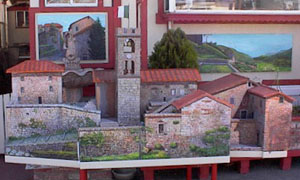 |
 |
 |
 |
The people of Pontito historically lived an agricultural life, growing food for
themselves as well as chestnuts and exquisite lentils known throughout the
region. They raised sheep, cows, goats, pigs and chickens. In the 18th century,
Pontito had more than 400 villagers.
Before the modern road now leading to Pontito was built, one could arrive only
by the small, twisting roads common to this hilltown area. The isolation from
tourist traffic has preserved
|
 |
Pontito, but has also contributed to its decline. The younger people have moved
to the cities or abroad, and the 60 permanent inhabitants are all retired,
living out their lives in their native village. With no more children to teach,
the last elementary school closed in 1974. Today, Pontito comes alive only in
the summer months, when owners of the houses return for the holiday. It is sad
to realize that Pontito’s beauty will not be able to save it from becoming a
village museum, beautiful but deserted.
|
 |














